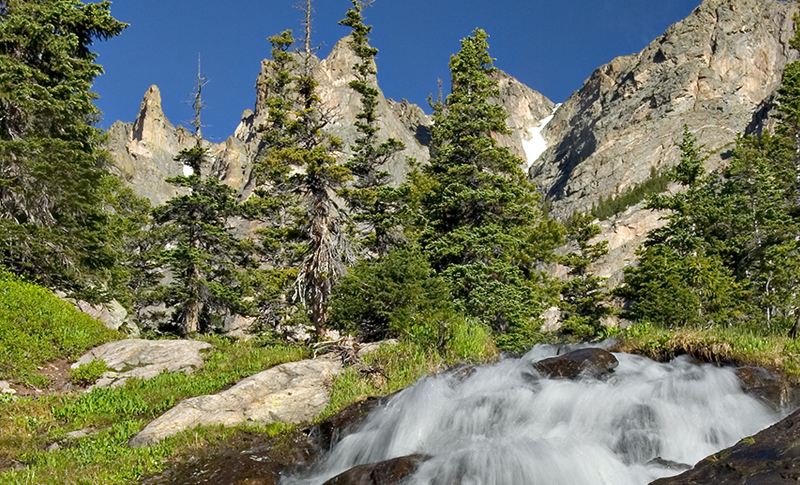Forestry - Trees and Tree Products

- An acre of trees can remove about 13 tons of dust and gases every year from the surrounding environment.
- Every year the average American uses the equivalent of one tree that is 100 feet tall and 16 inches in diameter to fill all his or her wood and paper needs.
- The single oldest living thing on Earth is a tree.
- The rings on a cross-section of a cut tree can indicate the tree's age but also provides a history of weather conditions. A thin ring indicates a dry year while a thick ring indicates a wet year.
- The average American uses 749 pounds of paper per year. Ninety-five percent of houses are built with wood. That means each American uses the equivalent of a 100-foot high, 16-inch diameter tree each year.
- An average, large healthy tree could have about 2,000 leaves.
- Forestry ranks among the top 10 employers in 40 of the 50 states.
- Roughly 4 million tree seedlings are planted each day.
- Today the US has about the same amount of land covered by trees as it had in 1907.
Paper
- Paper is produced by the amalgamation of fibers, typically vegetable fibers composed of cellulose, which are subsequently held together by hydrogen bonding.
- The most common source of these kinds of fibers is wood pulp from pulpwood trees. Vegetable fiber materials such as cotton, hemp, linen, and rice are also used. In Oklahoma the loblolly pine is a fast growing tree used in the production of paper.
Pencils
- In ancient Rome, scribes wrote on papyrus (an early form of paper) with a thin metal rod called a stylus, which left a light but readable mark. Other early styluses were made of lead. Today we still call the core of a pencil the "lead" even though it is made from nontoxic graphite.
- Graphite came into widespread use following the discovery of a large graphite deposit in Borrowdale, England in 1564. Graphite left a darker mark than lead, but was so soft and brittle that it required a holder. At first, sticks of graphite were wrapped in string. Later, the graphite was inserted into wooden sticks that had been hollowed-out by hand.
- The first mass-produced pencils were made in Nuremberg, Germany, in 1662. There an active pencil industry developed with famous companies like Faber-Castell established in 1761, Lyra, Steadtler and others growing throughout the 19th century industial revolution.
- Until the war with England cut off imports, pencils used in America came from overseas. William Monroe, a cabinetmaker in Concord, Massachusetts, made the first American wood pencils in 1812 as did another Concord area maker, the author Henry David Thoreau.
- The first mass-produced pencils were unpainted, to show off their high-quality wood casings. However, by the 1890s, many manufacturers were painting their pencils and giving them brand names.
- Early American pencils were made from Eastern Red Cedar, a strong, splinter-resistant wood that grew in Tennessee and other parts of the southeastern United States. Many Northern manufacturers set up wood mills in Tennessee and other Southern states where Eastern Red Cedar grows. Eventually much of the US pencil manufacturing industry established pencil factories in Tennessee where the remaining US producers are primarily concentrated today.
- By the early 1900s, pencil manufacturers needed additional sources of wood, and turned to California's Sierra Nevada mountains. There they found Incense-cedar, a species that grew in abundance and made superior pencils. California Incense-cedari soon became the wood of choice for domestic and international pencil makers around the world.
- To ensure the continued availability of Incense-cedar, forest workers have carefully managed the stands of trees in which Incense-cedar grows, and timber companies have been careful to harvest the trees on a sustained-yieldi basis. "Sustained-yield" means that the annual growth of the forest is greater than the amount harvested from the forest. Forests managed on a sustained-yield basis are abundant and healthy, and will continue to provide wood for people and habitat for animals for generations to come.
